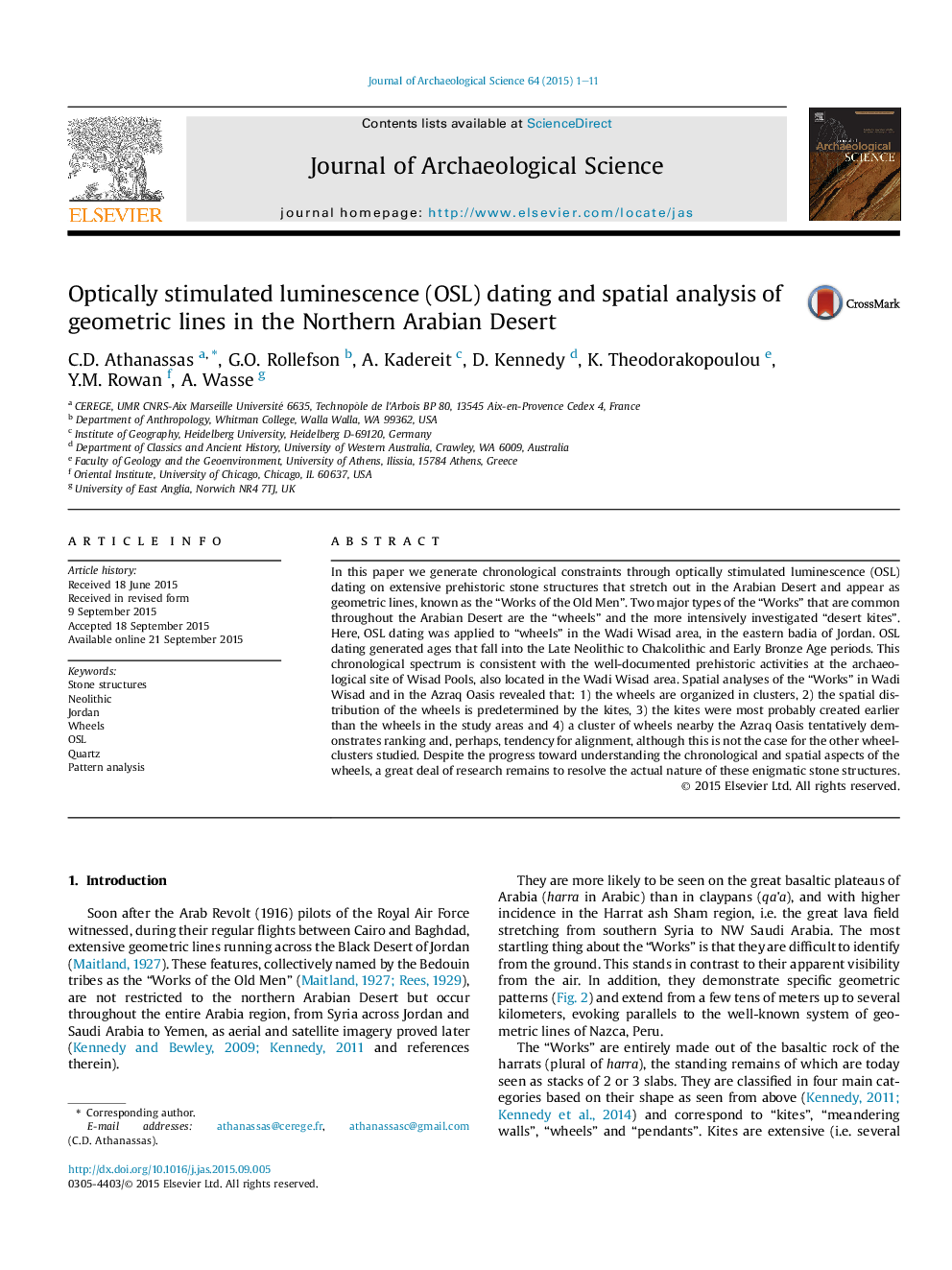| کد مقاله | کد نشریه | سال انتشار | مقاله انگلیسی | نسخه تمام متن |
|---|---|---|---|---|
| 1035338 | 1483896 | 2015 | 11 صفحه PDF | دانلود رایگان |
• Extensive prehistoric stone structures in Jordan are known as the “Works of the Old Men”.
• We date by OSL a category of the “Works” known as “wheels”.
• OSL dates the wheels from eastern Jordan to the Late Neolithic, and Early Bronze Age.
• Spatial statistics on the wheels reveals that they are organized in clusters.
In this paper we generate chronological constraints through optically stimulated luminescence (OSL) dating on extensive prehistoric stone structures that stretch out in the Arabian Desert and appear as geometric lines, known as the “Works of the Old Men”. Two major types of the “Works” that are common throughout the Arabian Desert are the “wheels” and the more intensively investigated “desert kites”. Here, OSL dating was applied to “wheels” in the Wadi Wisad area, in the eastern badia of Jordan. OSL dating generated ages that fall into the Late Neolithic to Chalcolithic and Early Bronze Age periods. This chronological spectrum is consistent with the well-documented prehistoric activities at the archaeological site of Wisad Pools, also located in the Wadi Wisad area. Spatial analyses of the “Works” in Wadi Wisad and in the Azraq Oasis revealed that: 1) the wheels are organized in clusters, 2) the spatial distribution of the wheels is predetermined by the kites, 3) the kites were most probably created earlier than the wheels in the study areas and 4) a cluster of wheels nearby the Azraq Oasis tentatively demonstrates ranking and, perhaps, tendency for alignment, although this is not the case for the other wheel-clusters studied. Despite the progress toward understanding the chronological and spatial aspects of the wheels, a great deal of research remains to resolve the actual nature of these enigmatic stone structures.
Journal: Journal of Archaeological Science - Volume 64, December 2015, Pages 1–11
